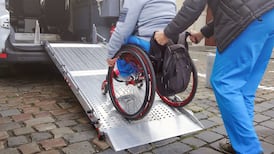Each day more stories emerge of people concerned over delays in coronavirus testing.
One man who spoke to The Irish Times this week had been trying to get his mother tested since before St Patrick’s Day. In her early 60s, with underlying medical conditions, she contacted her GP on March 16th with a severe cough, pains in her chest and a bad fever.
She was put on a waiting list, and after ringing for an update when symptoms didn’t improve, rang the community nurse on March 21st. Then, she was told she was no longer on the waiting list and had to reapply. She was eventually tested on March 28th, 12 days ago, and still has not received results.
Across the country, there are similar stories. On Thursday, this reporter spoke to more than a dozen people who have had faced similar or worse delays.
Minister for Health Simon Harris has proclaimed that Ireland's mantra is to "test, test, test". However, the credibility of this strategy is undermined by these delays, as well as shortages of both testing kits and lab supplies, leading to the closure of centres around the country. Changes to the criteria of those eligible for testing have also confused many.
With growth in new cases of the disease potentially on a downward trajectory, what is Ireland’s testing regime doing well, where is it failing, and where do we need it to go?
Mammoth effort
The HSE’s goal is to build capacity to the point where it can produce 15,000 test results per day. That is up from a point where the National Virus Reference Laboratory produced roughly that figure every flu season – lasting about six months.
"It's a mammoth effort, and it's really been an all-systems effort when you consider what we were capable of doing a couple of weeks ago, versus where the ambition is," says Paddy Mallon, a consultant in infectious diseases at St Vincent's hospital.
Three problems have emerged. First, the threshold for testing was set too low, overloading the system. Second, shortages in swabbing kits emerged, causing sampling centres to close. Third, lab supplies ran low, limiting the output of test results.
To a greater or lesser extent, these issues are being addressed, but waiting times for results, according to the Department of Health, is still about seven to 10 days. When asked, the HSE declined to put a precise figure on average waiting times between being swabbed and receiving a result, stating that hospital labs "are doing well and turning around tests swiftly". It also declined to say the number of people waiting on a test result, saying it was "changing daily".
‘Middling’ performance
The HSE's chief executive, Paul Reid, has said that Ireland is a "top-tier" country. That claim has been disputed by some. Dr Sean L'Estrange, a social scientist in UCD, has conducted a comparative analysis of reported testing figures. "It is difficult to support the claim that Ireland's testing practice for Covid-19 is in the top tier in the world", he wrote this week.
“Ireland is not doing badly and it is certainly not amongst the worst in the world by any stretch of the imagination. Yet compared with other similar-sized and resourced states in the European context, its performance is decidedly middling,” he wrote.
Last week, the number of test results being achieved fell to 1,500 per day at one stage, although it is projected to rise to 4,500 per day by the end of the week.
While Ireland may not be the world-beater that is sometimes claimed, deputy chief medical officer Ronan Glynn said this week the State is fifth of 14 European countries that report total tests undertaken to date.
Fast results
Why does testing matter? For the thousands of people waiting for a result or test, it is largely immaterial. If they become sick enough to be hospitalised, they will get a fast-track result. Otherwise, they will stay at home and self-isolate until symptom-free.
The reason testing really matters is that it is a key part of relaxing restrictions. If the State's current lockdown is to be restricted, "it's a question of absolutely being in the starting blocks when you lift the restrictions so that you're going to be able to spot cases quickly", says Dr Gabriel Scally, author of the report into CervicalCheck and a prominent public health expert.
Building a system that can turn around results, and fast, is key, according to chief medical officer Tony Holohan. "We need to have a contact tracing capacity and testing capacity to give us real-time – in other words same-day or following-day – results," he said this week.
Without that, and the associated assurances that cases can be quickly identified and isolated, there is no going back to a “new normal”, sources say. “That’s our route out of this,” says Dr Mallon. “The key to doing that is being able to monitor, at a national level, what is happening to infections.”
“Having the ability to scale up on testing and maintain that scale will be a large part of getting back to normal,” one Government source said. The other elements of returning to normal include the improvement of contact tracing, which has had serious teething problems as civil servants are retrained and technical systems put in place. An app, with widespread public use, which enables fast contact tracing, is also seen as vital.
The testing system may also be asked to do more in the future; Dr Scally says inbound passengers from affected areas may need to be tested, which would put further pressure on testing.
What is clear is that testing and contact tracing need to be significantly better than they are to support any kind of normalisation. As one Government source puts it: “We’re doing okay, but until we’re confident we’re doing a lot better we can’t relax restrictions.
“Otherwise this thing will come back like the plague it is.”











